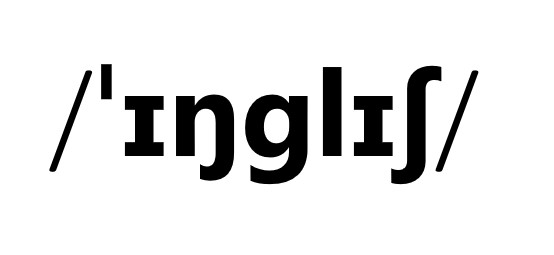Try pronouncing p, b, l and m . What do you notice?
These are consonants (though here still represented by letters), quite different from vowels in many ways. One way is that in most cases it is difficult to get an idea of what they sound like in isolation, as we often need to also pronounce a vowel in order to hear the phoneme (thus, con- ‚with‘, -sonant ’sounding‘). Another is that, thanks to the role of English-speaking linguists in developing the IPA, most of the phonemic symbols for these sounds look much like the letters in the English alphabet. This can make things both easier for English language learners, in that the symbols are more familiar, and more difficult, in that they can also be confusing. Remember that m is a letter, and /m/ is a phoneme, or a sound. Consonants are described according to four defining features.

The first is that, like vowels, they are distinguished from one another according to the place of articulation, i.e. the parts of the mouth with which they are pronounced. However, rather than just being formed by the approach of the speech ‚organs‘, they are mostly characterized by contact between them, which creates an obstruction to the airflow and thus creates the sound. Thus, /p/, /b/ and /m/ are formed by the lips being pressed together, and /l/ by the tip of the tongue touching the alveolar ridge behind the top front teeth. This image shows you the parts of the body used in pronouncing the sounds.
You will have noticed as well that /p/ and /b/ are also different from one another. Place one hand on your throat and one in front of your mouth as you say each one, and you will feel it: /b/ makes your vocal cords vibrate, using voice, and /p/ is created using only air. Thus, while the place of articulation (the lips) is the same, voice and aspiration (how much air is expressed) distinguish them further from one another.
Finally, /b/ and /m/ are both voiced and both bilabial, but they differ in a very different way: the manner of articulation. /b/ is a plosive, or a stop, while /m/ is a continuant nasal. That is, /b/ is expressed by the lips pressing together to stop the air, and then opening to release a kind of (ex)plosion of air. /m/, on the other hand, can be pronounced continually — mmmmm — because the air is instead released through the nose.
Just for fun: pre-viewing task
Which English consonants cause you trouble? Which are most difficult to pronounce? Why do you think that is? Take a moment to think about this before you watch the video below.
This table gives you an overview of all of the consonant phonemes in English, including a few non-standard ones. You’ll notice the glottal stop /ʔ/, which is present in a number of varieties of English, and for example quite common in both Scots English and African-American Vernacular, but is not otherwise present in this course. Also the alveolar tap /ɾ/ is often not included in standard transcriptions, but it plays a significant role in Standard American English. Finally, you will notice that one or two phonemes occur twice in this table, which is meant to represent that more than one place of articulation plays a role in their pronunciation. There will be more information on those in the post on complex and difficult consonants. For the moment, it is important to know simply that these are all of the consonant phonemes you will generally encounter in English. The table does not address aspiration, but sorts them according to the three other features described above.
| Place of Articulation | |||||||||||||||||||
|---|---|---|---|---|---|---|---|---|---|---|---|---|---|---|---|---|---|---|---|
| Bilabial | Labiodental | Dental | Alveolar | Post-Alveolar | Palatal | Velar | Glottal | ||||||||||||
| vl | vd | vl | vd | vl | vd | vl | vd | vl | vd | vl | vd | vl | vd | ||||||
| Manner of Articulation | Plosive | /p/ | /b/ | /t/ | /d/ | /k/ | /g/ | /ʔ/ | |||||||||||
| Tap or Flap | /ɾ/ | ||||||||||||||||||
| Fricative | /f/ | /v/ | /θ/ | /ð/ | /s/ | /z/ | /ʃ/ | /ʒ/ | /h/ | ||||||||||
| Affricate | /tʃ/ | /dʒ/ | |||||||||||||||||
| Nasal | /m/ | /n/ | /ŋ/ | ||||||||||||||||
| Lateral | /l/ | ||||||||||||||||||
| Approximant | /w/ | /r/ | /j/ | /w/ | |||||||||||||||
Then, you might want to try some exercises on the basic concepts and the more straightforward consonants described here.


